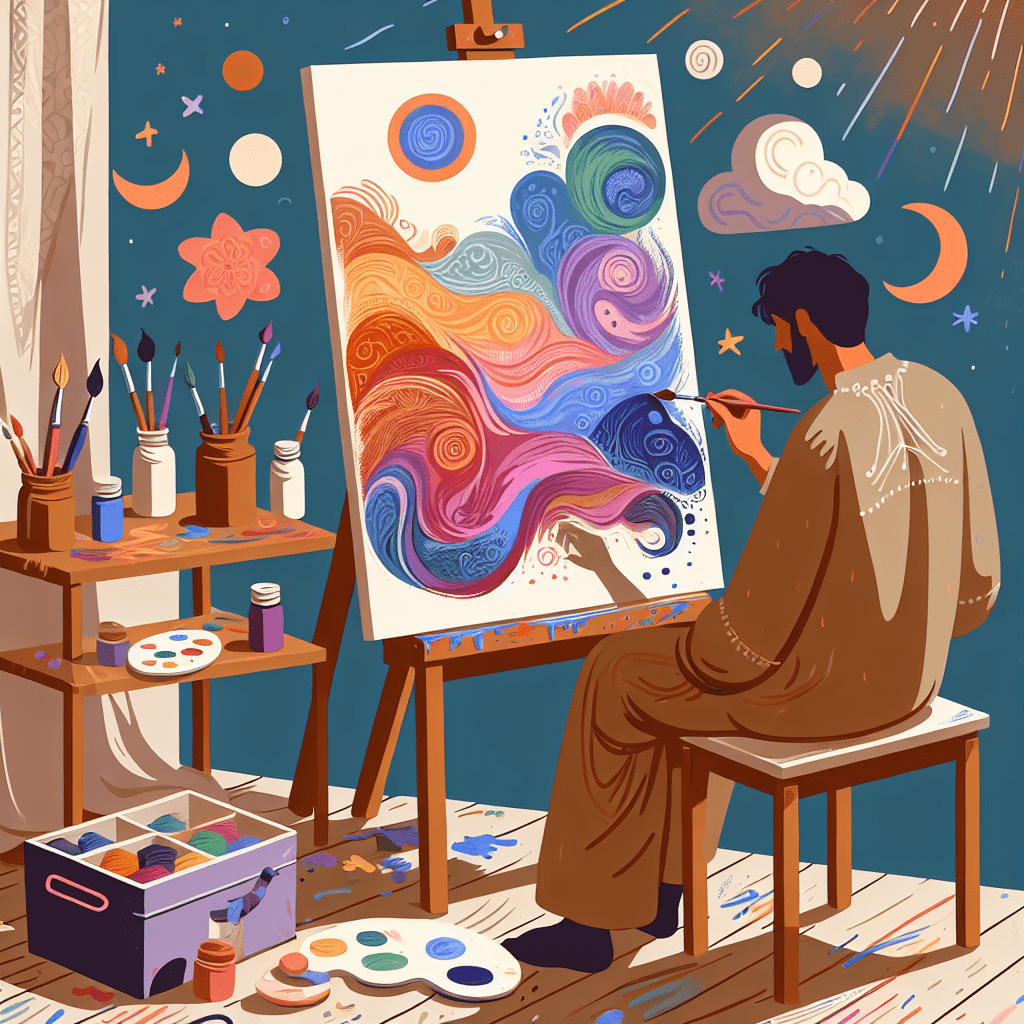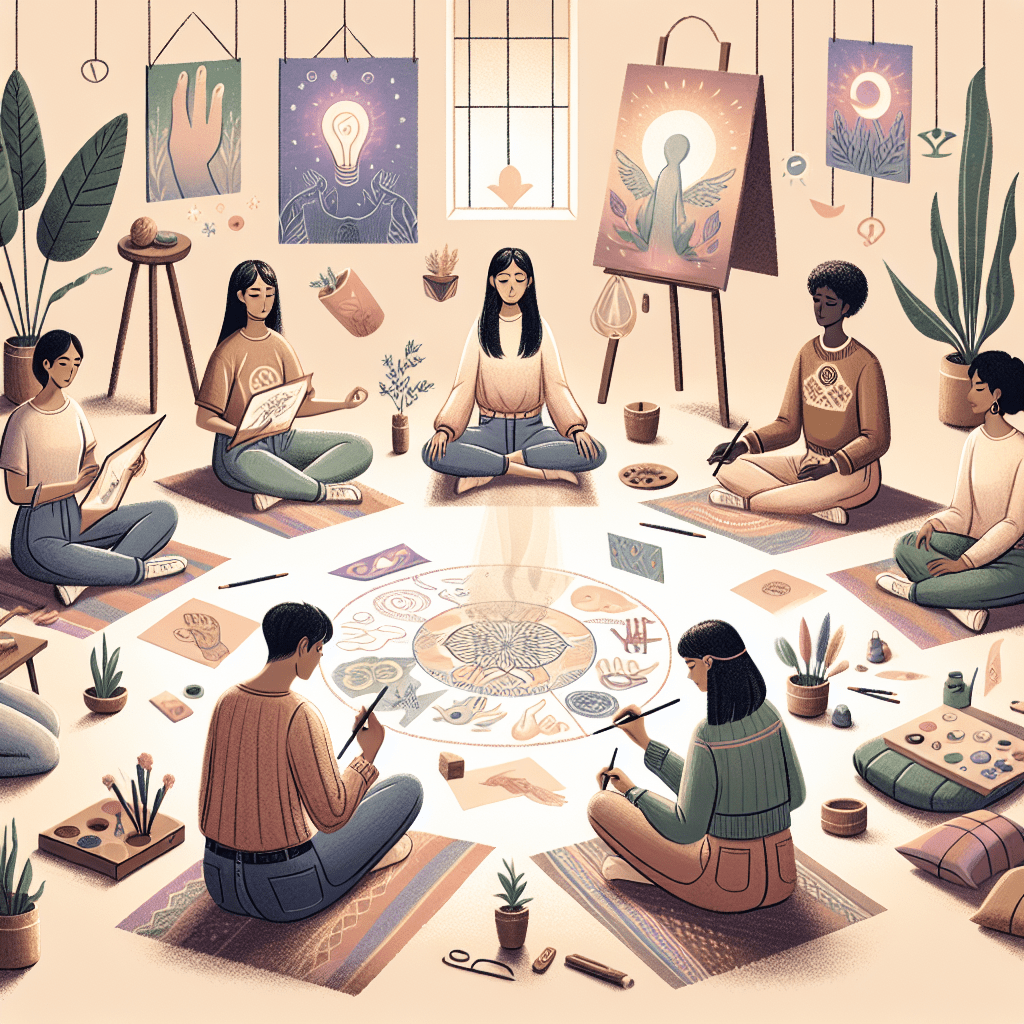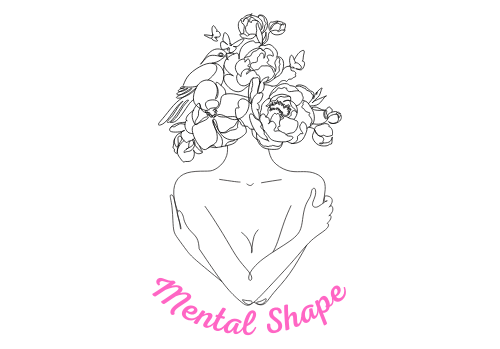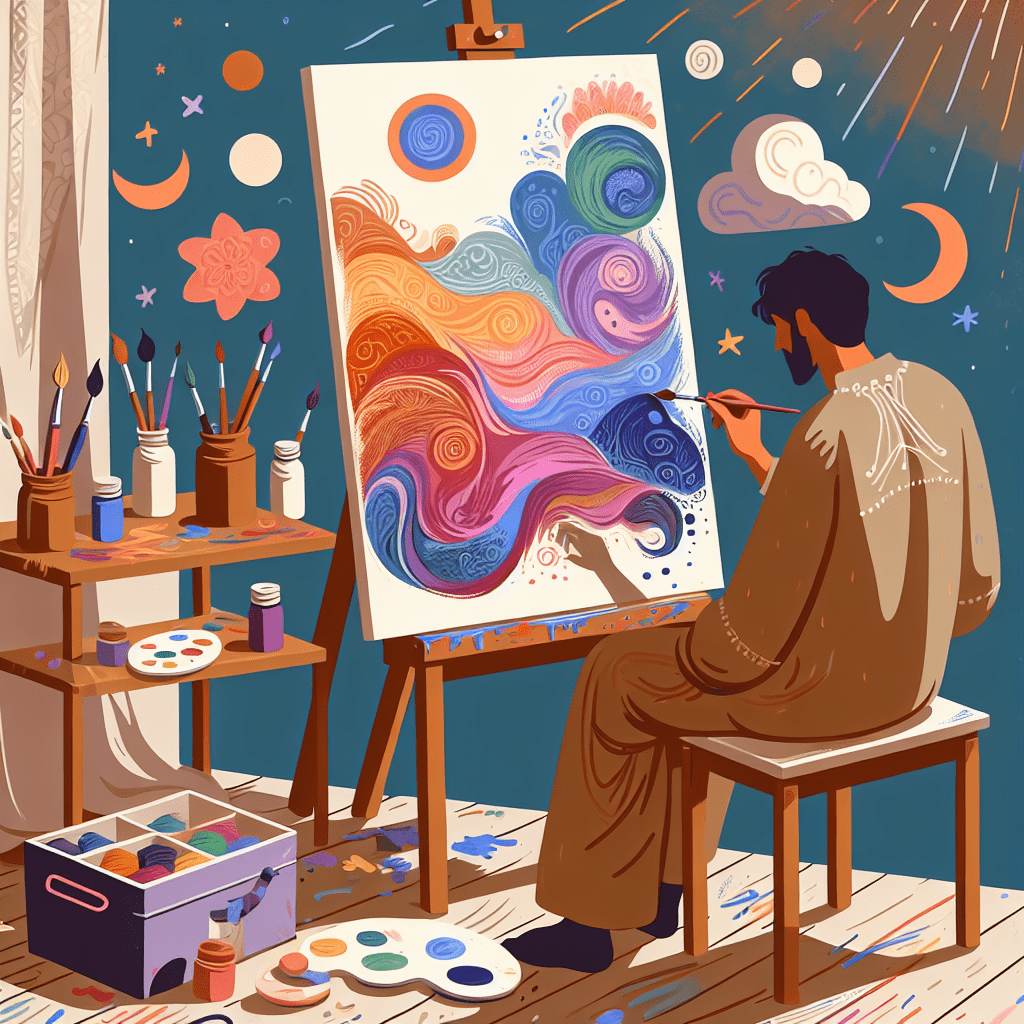Art therapy offers a unique and powerful way for individuals to express themselves and explore their emotions through various art forms. This article explores the numerous benefits that art therapy provides in terms of self-expression. By engaging in art activities, individuals can tap into their creative side, release pent-up emotions, gain insight into their thoughts and feelings, and ultimately find healing and personal growth. Through the use of art materials and techniques, art therapy encourages self-reflection, self-awareness, and self-discovery, leading to improved mental, emotional, and even physical well-being. Whether it’s painting, drawing, sculpting, or even collage-making, art therapy provides a safe and supportive environment where individuals can truly express themselves and find solace in their artistic creations.

Physical Benefits
Relaxation and stress reduction
Engaging in art therapy can provide a much-needed escape from the stresses and pressures of everyday life. When you immerse yourself in the process of creating art, it allows your mind to relax and focus on the present moment. Through the act of painting, drawing, sculpting, or any other form of artistic expression, you can experience a sense of calm and tranquility. The rhythmic motions and repetitive actions involved in art-making can help reduce muscle tension and promote relaxation throughout your body.
Improvement in fine motor skills
Art therapy often involves using various tools and materials, such as paintbrushes, pencils, or clay, which require precision and control. By regularly practicing art therapy, you can improve your fine motor skills, including hand-eye coordination, dexterity, and grip strength. These skills are essential for performing everyday tasks like writing, typing, and even self-care activities like buttoning clothes or tying shoelaces.
Enhancement of sensory integration
Art therapy engages multiple senses, such as sight, touch, and even smell in the case of using different art materials. Through exploring various textures, colors, and mediums, you can stimulate your sensory receptors and enhance your ability to process sensory information. This integration of sensory experiences helps improve your overall sensory perception and can have a positive impact on your daily functioning and overall quality of life.
Emotional Benefits
Increasing self-awareness
Art therapy serves as a powerful tool for self-reflection and self-discovery. Through the creation of art, you can explore your inner thoughts, feelings, and emotions in a safe and non-judgmental environment. This process allows you to gain a deeper understanding of yourself, your values, and your personal experiences. By becoming more self-aware, you can make positive changes in your life and develop a greater sense of self-acceptance and self-compassion.
Managing and expressing emotions
Art therapy provides a healthy outlet for processing and expressing emotions that may be difficult to convey through words alone. By channeling your feelings into the artwork, you can release pent-up emotions and gain a sense of relief and catharsis. The act of visualizing and externalizing your emotions can help you gain perspective and develop coping strategies to manage them effectively.
Boosting self-esteem
Engaging in art therapy can significantly boost your self-esteem and self-confidence. As you create artwork, you witness your own creativity and ability to produce something uniquely your own. This sense of accomplishment and pride can translate into other areas of your life, helping you build confidence in your abilities and fostering a positive self-image. Art therapy also offers an opportunity for self-expression without judgment, allowing you to embrace and celebrate your true self.
Cognitive Benefits
Enhancing problem-solving skills
Art therapy promotes creative problem-solving by encouraging you to think outside the box and explore alternative solutions. The process of creating art often involves encountering challenges and obstacles that require critical thinking and adaptability. Through experimentation and exploration, you can develop and strengthen your problem-solving skills, transferring this ability to real-life situations beyond the art therapy setting.
Stimulating creativity and imagination
Art therapy taps into your innate creativity and imagination, allowing you to think and conceptualize in unconventional ways. By engaging in artistic activities, you can stimulate your creative thinking processes and unlock new ideas and perspectives. This freedom of expression promotes imaginative thinking and can inspire innovative approaches to problem-solving in various aspects of your life.
Promoting cognitive flexibility
Art therapy encourages flexibility in thinking and the ability to adapt to new situations and challenges. Through the exploration of different artistic techniques, materials, and styles, you can practice shifting your mental perspective and embracing new ways of seeing and understanding the world. This cognitive flexibility fosters adaptability and resilience in the face of change and can lead to personal growth and enhanced cognitive functioning.

Social Benefits
Improving communication skills
Art therapy provides a platform for non-verbal communication, which can be especially helpful for individuals who struggle with expressing themselves verbally. Through the creation of art, you can communicate your thoughts, feelings, and experiences to others in a visual and symbolic manner. This form of expression can enhance your ability to communicate effectively, both within the therapy setting and in your interpersonal relationships outside of therapy.
Fostering social connections
Participating in art therapy in group settings allows for the development of social connections and a sense of belonging. The shared experience of creating art with others can create a supportive and inclusive environment that promotes understanding, empathy, and camaraderie. Engaging in discussions and collaborations during art therapy sessions can help you build meaningful relationships and establish a sense of community.
Encouraging self-reflection
Art therapy invites introspection and self-reflection, encouraging you to explore your thoughts and feelings in a meaningful way. By analyzing your artwork and reflecting on the creative process, you can gain insights into your own motivations, beliefs, and values. This self-reflective practice can improve your self-awareness and help you make more informed choices in your personal and interpersonal interactions.
Psychological Benefits
Reducing symptoms of anxiety and depression
Art therapy has been shown to be an effective intervention for reducing symptoms of anxiety and depression. Engaging in creative activities can divert your attention away from negative thoughts and worries, providing a sense of relief and distraction. The act of creating art also releases endorphins, which are natural mood-lifters, promoting a sense of well-being and reducing feelings of anxiety and depression.
Processing and resolving trauma
Art therapy can serve as a therapeutic tool for individuals who have experienced trauma. Creating art allows you to express and process traumatic memories and emotions in a safe and controlled manner. Through the guidance of a trained art therapist, you can gradually work through the trauma, gaining a sense of empowerment and facilitating the healing process.
Promoting emotional well-being
Engaging in art therapy promotes emotional well-being by providing a healthy outlet for emotional expression and release. The act of creating art can generate positive emotions such as joy, satisfaction, and relaxation. Moreover, art therapy encourages emotional regulation, helping you develop strategies to manage and navigate your emotions effectively. By fostering emotional well-being, art therapy enhances your overall mental health and contributes to a more balanced and fulfilled life.
Expressive Benefits
Providing a non-verbal form of communication
Art therapy offers a unique opportunity for non-verbal communication, which can be particularly beneficial for individuals who struggle to express themselves verbally. Through the use of visual symbols and metaphors, you can communicate your thoughts, emotions, and experiences in a way that transcends language barriers. This form of expression allows for a deeper and more nuanced understanding of yourself and can aid in communicating with others who may not share the same language or perspective.
Allowing freedom of self-expression
Art therapy provides a safe and non-judgmental space where you can freely express yourself without fear of criticism or rejection. There are no right or wrong ways to create art in art therapy, allowing you to explore and experiment with a range of artistic techniques and styles. This freedom of self-expression can be liberating and empowering, enabling you to discover and embrace your authentic self.
Creating a sense of empowerment
Engaging in art therapy can cultivate a sense of empowerment and autonomy. Through the process of creating art, you are in control of your creative choices and can assert your unique voice and perspective. This sense of empowerment can extend beyond the therapeutic space, empowering you to take charge of other aspects of your life and make positive changes that align with your values and goals.
Therapeutic Benefits
Supporting personal growth and self-discovery
Art therapy facilitates personal growth and self-discovery by providing a space for exploration and reflection. Through the act of creating art, you can tap into your inner resources, uncover hidden strengths, and discover new aspects of yourself. This process of self-discovery fuels personal growth, allowing you to make meaningful and lasting changes in your life.
Providing a safe space for emotional exploration
Art therapy offers a safe and confidential environment where you can explore and process complex emotions. The therapeutic relationship formed with an art therapist provides a supportive container for emotional exploration and healing. Through the art-making process, you can address unresolved issues, confront deep-seated fears, and gain a sense of closure and resolution.
Facilitating emotional release and catharsis
Art therapy allows for the release of pent-up emotions and the cathartic expression of inner turmoil. By externalizing your emotions through art, you can gain a sense of relief and release from emotional burdens. The act of creating art becomes a transformative experience, providing a means to channel and transform your emotions into something tangible and expressive.
Healing Benefits
Aiding in emotional healing
Art therapy can play a significant role in the emotional healing process. Through the creation of art, you can explore and process past traumas, unresolved emotions, and painful memories. The act of externalizing these experiences through art allows for a deeper understanding and acceptance of your emotional wounds. Art therapy provides a supportive space for healing, allowing you to move forward with increased resilience and a renewed sense of emotional well-being.
Promoting relaxation and stress reduction
Art therapy promotes relaxation and helps reduce stress by engaging in a soothing and enjoyable activity. The act of creating art can release tension and anxiety, allowing you to enter a state of flow and mindfulness. This state of deep absorption in the artistic process leads to a sense of calm and tranquility, promoting inner peace and reducing the negative effects of stress on your mind and body.
Supporting overall well-being
Art therapy encompasses a holistic approach to well-being, addressing the interconnectedness of mind, body, and spirit. By engaging in art therapy, you nurture all aspects of your being, fostering a sense of wholeness and balance. The therapeutic benefits of art therapy extend beyond the duration of the artistic session, contributing to your overall well-being in daily life.
Individualized Benefits
Tailoring the therapy to individual needs
Art therapy is a highly customizable form of therapy that can be tailored to meet individual needs and preferences. Whether you prefer painting, drawing, sculpture, or any other artistic medium, the therapy can be adapted to suit your personal interests and strengths. Additionally, art therapists can modify the pace and structure of the sessions based on your comfort level, ensuring that the therapy is personalized and meaningful to your unique journey.
Adapting to various age groups and abilities
Art therapy is suitable for individuals of all ages, from young children to older adults. Depending on the age group or specific needs, art therapy techniques and materials can be adapted to accommodate varying skill levels and cognitive abilities. This flexibility allows for inclusivity and ensures that everyone can benefit from the therapeutic power of art, regardless of their age or individual circumstances.
Customizing art techniques and materials
Art therapy offers a wide range of techniques and materials that can be customized according to individual preferences and therapeutic goals. Whether it’s painting, collage, sculpting, or digital art, the choice of materials and techniques can be tailored to your specific needs and interests. This customization allows you to engage in art-making in a way that resonates with you personally, enhancing the therapeutic benefits and promoting a deeper sense of connection and engagement.
Long-Term Benefits
Building coping skills and resilience
Art therapy equips you with valuable coping skills that can be applied in various aspects of your life. Through the process of creating art, you learn to manage and regulate your emotions, develop problem-solving strategies, and build resilience to navigate life’s challenges. These skills, once established in art therapy, can be carried over to everyday situations, enhancing your ability to cope and thrive in the face of adversity.
Sustaining improvements in self-expression
Art therapy fosters long-lasting improvements in self-expression skills. Through regular engagement in art therapy, you refine your artistic abilities, develop a personal style, and expand your creative repertoire. These improvements in self-expression extend beyond the therapeutic setting, empowering you to effectively communicate your thoughts, emotions, and experiences in various domains of your life.
Contributing to long-lasting emotional and mental health
Art therapy contributes to long-lasting emotional and mental health by promoting self-awareness, emotional regulation, and self-empowerment. The insights gained through art therapy can serve as a foundation for ongoing self-care practices, facilitating emotional well-being throughout your life. By nurturing your emotional and mental health, art therapy helps you cultivate resilience, find meaning and purpose, and live a more fulfilling and balanced life.

